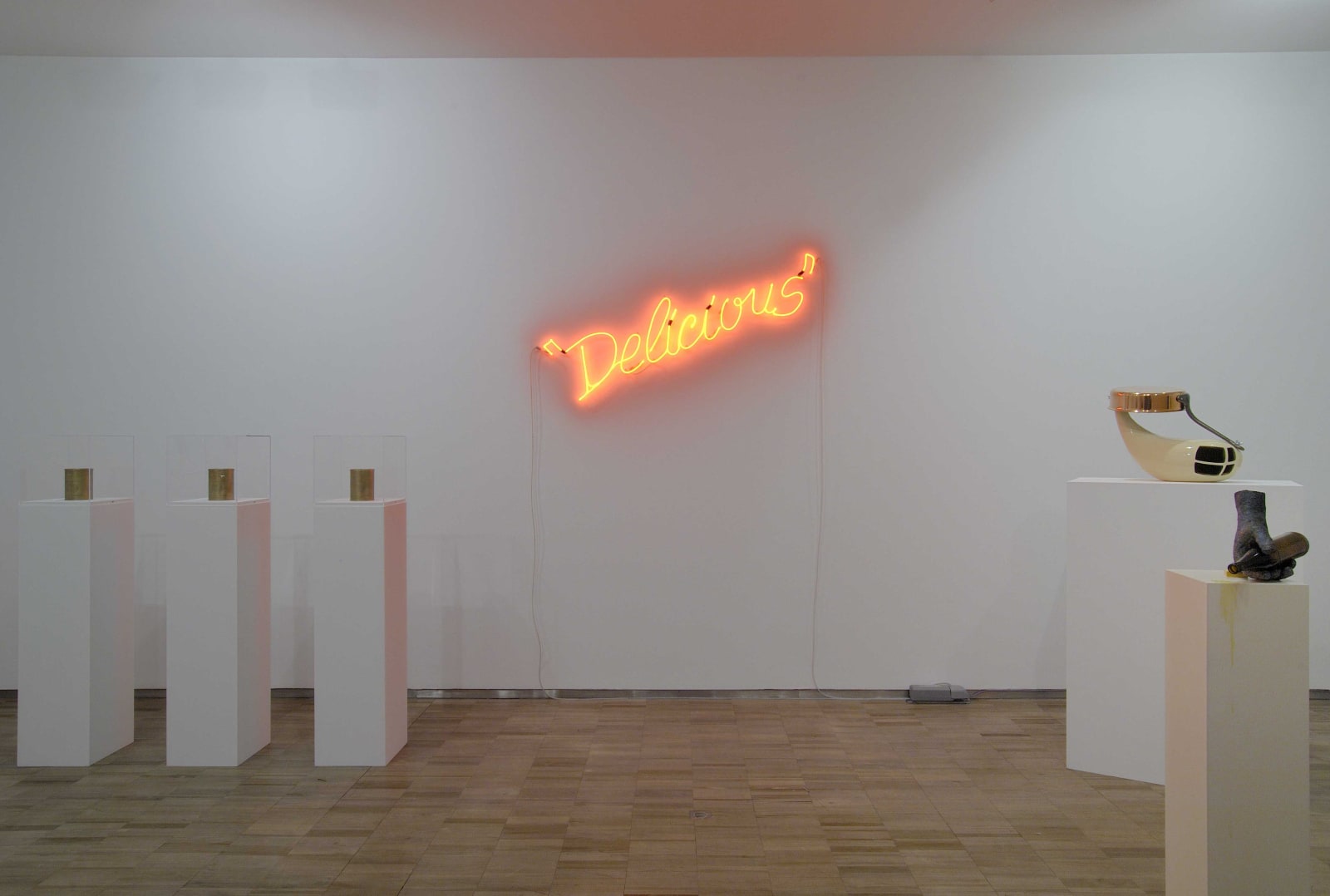Francis Picabia, in the early 1940s, was the first person to incorporate trivial magazine images on a large scale in his pictorial compositions, thus making him the spiritual father of a whole generation of artists brought up in the 1980s who reacted to the media's visual bombardment by collecting and combining these images in an intensive and original manner.
Within this context, Bernhard Martin has created a new form of radicalism, associating every conceivable plastic universe and overlapping them in interactions reminiscent of the Surrealist tradition. Their components, however, remain clearly defined, separated from one another by strong outlines. Bernhard Martin's pictures are as a reflection of the interfaces of contemporary computer graphic software. The hybrid nature of his characters, landscapes and objects is accentuated yet further by his stylistic heterogeneity, employing photographic realism alongside more abstract forms of bodily expression, as well as two-dimensional areas executed with an airbrush. Every choice made by the artist might, however, have well been different.
Bernhard Martin is a chronicler of everyday life. His use of objects, sometimes utterly infantile, never spontaneous but rather carefully thought through, characterises his approach. He himself sums up his method in the following way: "Idea of interchangeability without notion of chance". With his vast collection of objects, which often resemble "objects ready to use but of ungainly purpose" (Vanessa J. Müller), he never denies traditional art-historical classifications; landscapes, still-lives, genre scenes and portraits always remain identifiable. "What interest me are all those different worlds, those islands, those cabinets full of curios, those biotopes, those clashing contrasts; in short, daily life," says Bernhard Martin, describing the purpose contained within his work, a fascinating sub-system of real phenomena.
Drawing holds a very special place in Bernhard Martin's oeuvre. Unlike Alex Katz with his Paintings in Black and White (Carter Ratcliff), Bernhard Martin's drawings are not so much precise models for subsequent creations, but rather tangible traces of an elaborate process of invention, the echo of the stress of an "inspection" of the iconographic potential of a specific motif. Shapes and compositions are "tested" before being transformed into different formats, some monumental. His drawings cover a wide spectrum ranging from classical, entirely in graphite, to polychrome compositions with areas of collage and multicoloured acrylic, all displaying a precision resulting from the immense effort and concentration required to find the perfect form of expression for a plastic idea born of the observation of everyday life.
Bernhard Martin was born in Hanover in 1966, and studied at the Fine Art Academy in Cassel from 1983 to 1989. He now lives in Berlin. He first came to the attention of the public at large with his much talked about entry in the group exhibition of new German painting at the Frankfurt Kunstverein in 2003. His work is in several major collections including the Musée d'Art Contemporain in Geneva, the Kunsthalle in Mannheim, MoMA in New York and the Rubell Collection in Florida. Bernhard Martin has also had a number of important one-man shows, notably at the Villa Arson in Nice in 2004, and at the Arario Contemporary Art Museum in Seoul in 2006-7.
In November 2008, Bernhard Martin is due to receive the prestigious Art Prize of the City of Wolfsburg, attributed, in recent years, to artists such as Jörg Herold, Katharina Fritsch, Olaf Nicolai and Thomas Schütte. Zdenek Felix, art-historian and former director of the Deichtorhallen in Hamburg, will give the presentation ceremony speech.


Bernhard Martin: Nonvillages Et Ouivillages, Galerie Thaddaeus Ropac Paris Marais, 2007
Bernhard Martin Nonvillages Et Ouivillages
18 October—17 November 2007
Paris Marais
/
Overview
Bernhard Martin is a chronicler of everyday life. His use of objects, sometimes utterly infantile, never spontaneous but rather carefully thought through, characterises his approach.
Francis Picabia, in the early 1940s, was the first person to incorporate trivial magazine images on a large scale in his pictorial compositions, thus making him the spiritual father of a whole generation of artists brought up in the 1980s who reacted to the media's visual bombardment by collecting and combining these images in an intensive and original manner. Within this context, Bernhard Martin has created a new form of radicalism, associating every conceivable plastic universe and overlapping them in interactions reminiscent of the Surrealist tradition. Their components, however, remain clearly defined, separated from one another by strong outlines. Bernhard Martin's pictures are as a reflection of the interfaces of contemporary computer graphic software. The hybrid nature of his characters, landscapes and objects is accentuated yet further by his stylistic heterogeneity, employing photographic realism alongside more abstract forms of bodily expression, as well as two-dimensional areas executed with an airbrush. Every choice made by the artist might, however, have well...












































































































































































